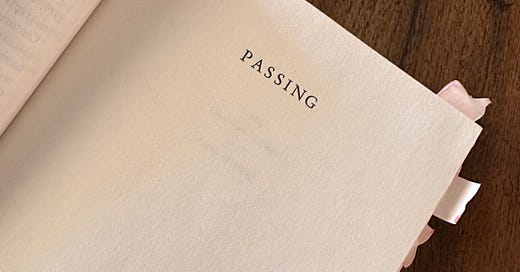Parts 2 & 3 of Passing
"Then everything was dark." A reading guide to parts 2 & 3 of the novel, including a deep dive into analyzing the shape of the story
Welcome to our second, and final, reading guide for Nella Larsen’s remarkable 1929 novel, Passing.
If you have not finished the novel and want to avoid spoilers, please read the book in its entirety …
Keep reading with a 7-day free trial
Subscribe to Closely Reading to keep reading this post and get 7 days of free access to the full post archives.




